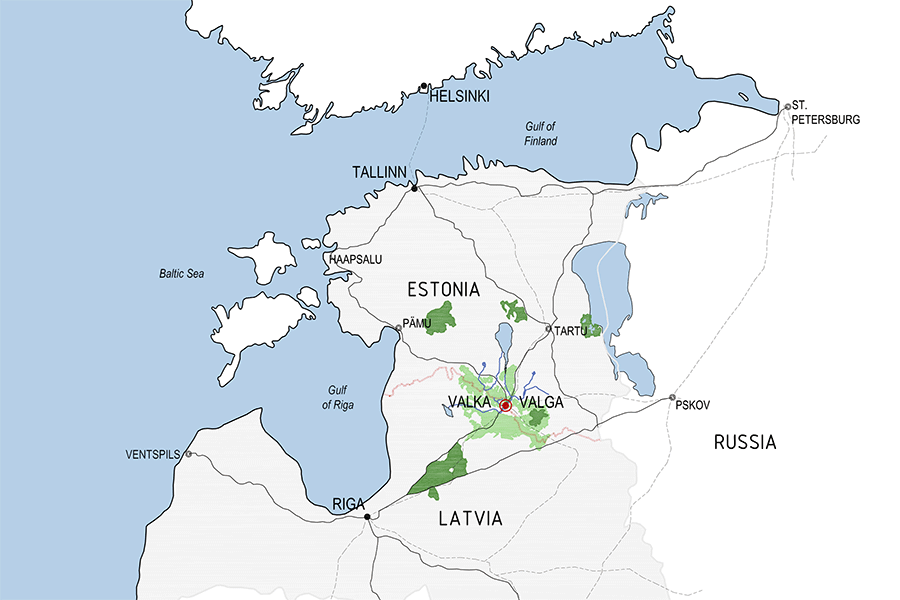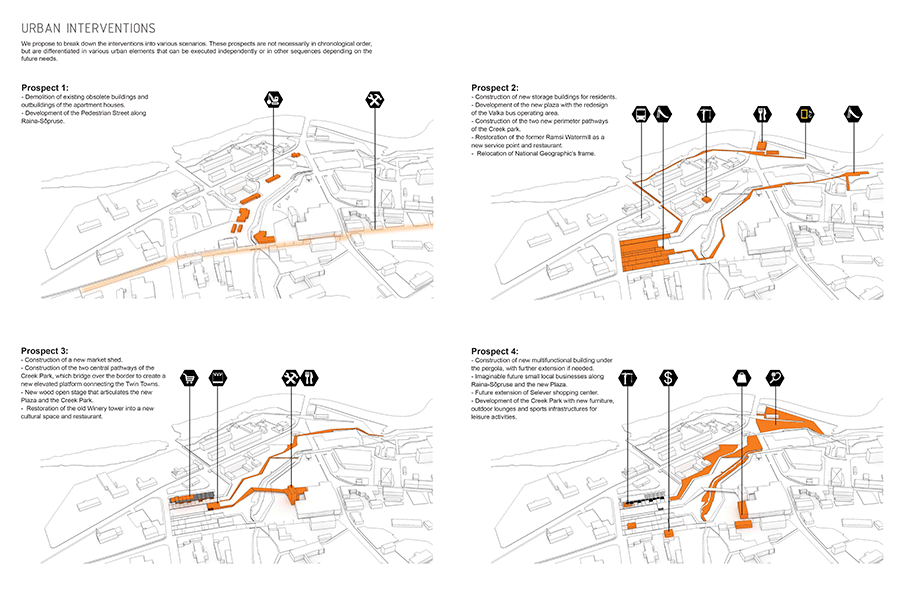Situació: Valga-Valka, Estonia-Letonia
Client: Valga-Valka Town Government, Estonian – Latvian Cross-Border Cooperation Program 2014-2020 (European Regional Development Fund)
Sup.: 5 ha
Concurs: 2016
1er Premi
Equip: Jordi Safont-Tria, Anna Gutiérrez, Álvaro Cuéllar, Ángel Canals, Mercedes Doz
CROSS-BORDER STRANDS
By identifying the natural and infrastructural strands that run from one side to the other of the frontier, our proposal stems from reinforcing these urban corridors to improve the connectivity between the Twin-Town through two distinctive elements: a reinvented urban axis that relates main public spaces of both sides of the border; plus the recovering of the creek area as a central Park, connecting the new core of the conurbation to the Pedele-Pedeli River as well as improving the accessibility between both margins of the stream.
The starting point of the proposal is to understand the singularity of the intersection between the Varžup?te-Konnaoja Creek and the new Pedestrian Street along Raina-Sõpruse. Our strategy is to recognize the Pedestrian Street as the first and main urban strand of a series of novel filaments that will pass through the Creek Park to the River area.
These strands are organized parallel to the Pedestrian Street on the Valka side, arranging a new Plaza for multiple events in addition to the bus terminal. The itinerary of these lines inflects and turns once entering into the green space of the creek. Some pathways create the limits of the green area; other trails bridge over the creek, whereas some others meet existing paths in order to reach the fluvial space.
The former boundary between the two countries is now an interface green space fulfilled with passageways that invite citizens to WALK through one town to the other, blurring political limits to connect diverse facilities and leisure areas. Valga and Valka WALK toward each other again like in the past.
Resembling some of Kalevipoeg’s illustrations, the strong giant carrying big planks on his shoulders, wood wants to become present into our proposal. This natural material takes all its traditional connotation to be displayed on the site forming new pathways on the landscape, furniture pieces and light erections such as the pergola. The wood defines fragments and traces of the innovative proposed strands that give a new structure to the site, connecting the Twin-Town Centres again.















